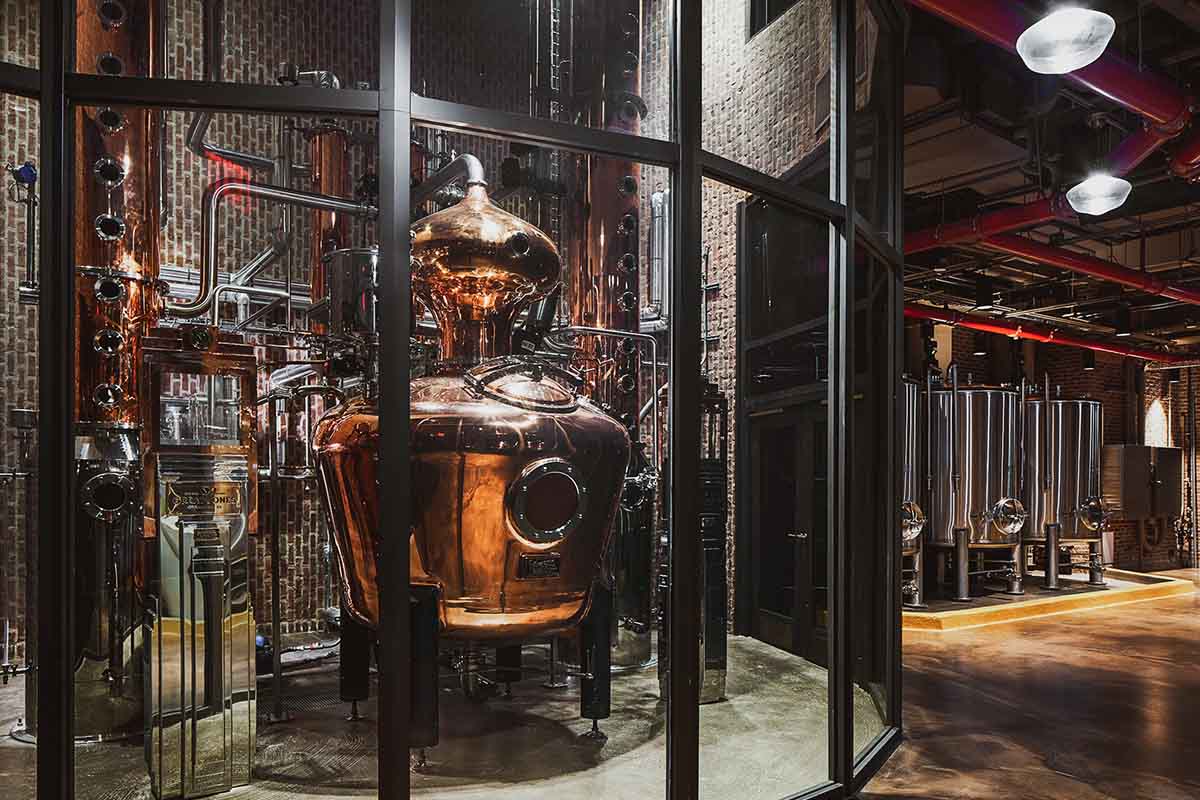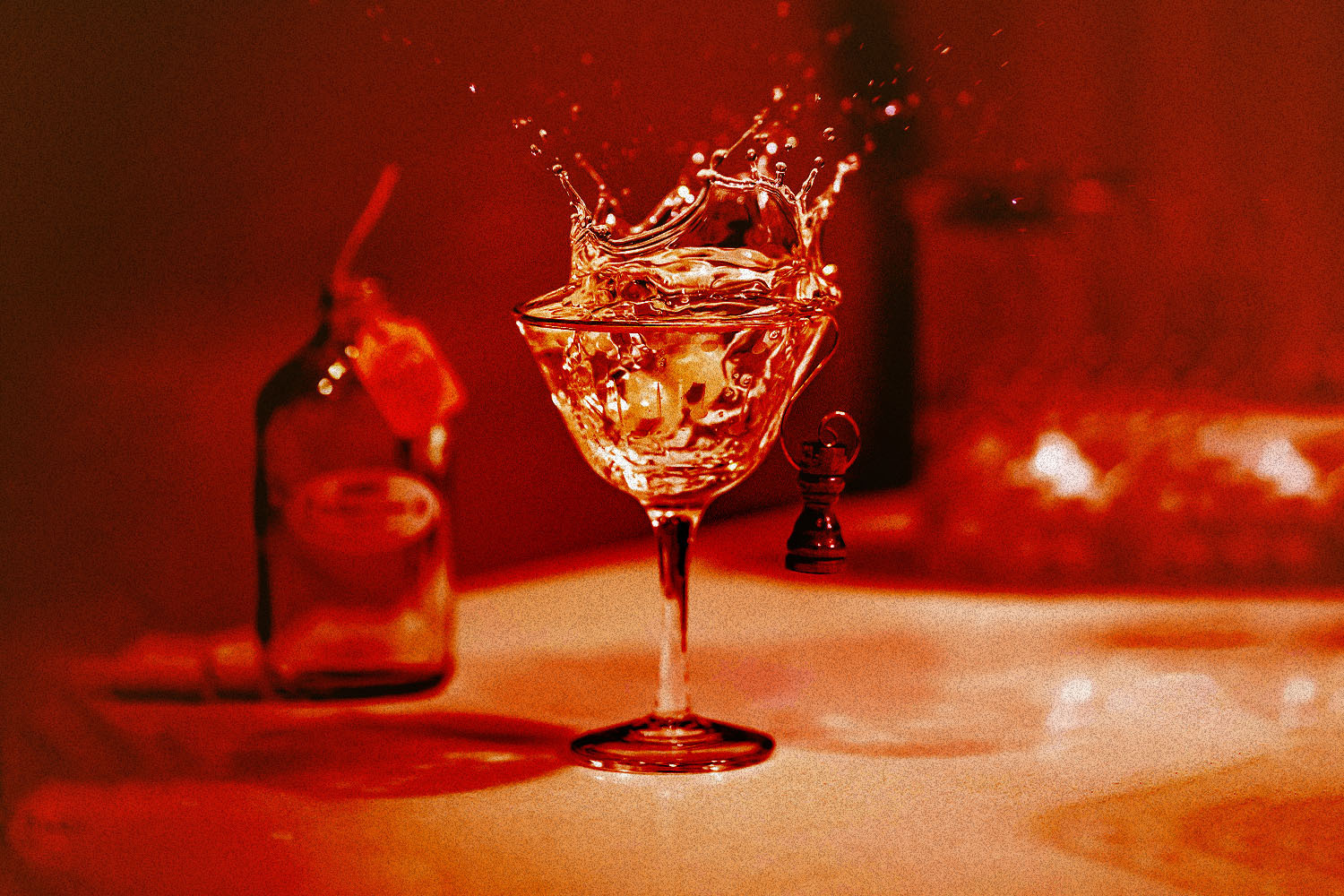A good whisk(e)y doesn’t have to be enjoyed neat or on the rocks. You can obviously add it to a cocktail. Or pair it with good food. And you can even use it to cook, which isn’t sacrilege. You don’t even have to be that precious about it.
“It doesn’t really matter how expensive the whisky is, what you need to look at is the flavor profiles,” says Paul Wedgewood of Edinburgh’s award-winning Wedgewood The Restaurant. “For example, if you want to add smokiness to a dish, you could buy a cheap bottle of peat whisky.”
That said, you ideally would look to use a quality whisky that you’d also enjoy drinking. “You want to show it off as well as what you’re cooking,” says Chef Paul Green of 1887 restaurant in Scotland’s The Torridon. In other words, you have some flexibility with price, as long as there’s a level of quality.
Your next step is figuring out what whisk(e)y goes with what dish. “Each whisky has its own unique characteristics and flavors, so it needs to be paired with the right ingredients,” says Wedgewood “There are so many whisky flavor profiles you can choose from like salty, fruity and smoky. For example, if I were cooking a salmon dish, I would choose a whisky with orange in it, as orange compliments salmon really well.”
Green agrees. “Talisker is a whisky we use that’s very close to us here in the highlands on the Isle of Skye,” he says. “It’s noted for its smoky and sweet taste — which works great with the fattiness of the fish we use it with.” (You’ll find that recipe below.)
The good news is that whiskey is versatile when it comes to cooking (side note: if you go to a distillery with a restaurant on-site, you’re bound to find some food that incorporates their own whiskey; it’s certainly true with NYC’s just-opened Great Jones Distilling Co.). You can also swap it in when a recipe calls for other spirits (“Brandy is usually used for making peppercorn sauce, but in my opinion, whisky works better,” says Wedgewood).
Just be sure follow a few simple rules when you’re using it for sauces, desserts or marinades:
- Whisky can overpower a dish if you use too much. Less is more.
- Taste the dish constantly. Add just a bit of whisky at a time.
- Treat it like gasoline … when it comes to safety. “It’s highly flammable,” notes KDB Group Chef Joshua Lanning. “Make sure you have plenty of room, and keep it away from oils. I’d suggest starting on a low flame [if you’re adding flame and are using a flambé technique]. Tilt the flame on low for a couple of minutes. When the flame goes away, it means the alcohol has dissipated quite a bit. If you taste it and it’s still boozy, keep cooking.”
And again, the one note that every chef we spoke with — whether they were discussing Scotch or bourbon, dinner or dessert — is to use a bottle that means something to you. As Chef Ashley Thomas, the culinary director of specialty food retailers and cheese experts Di Bruno Bros., told us: “When it comes to adding booze to your cooking, whether it’s wine, bourbon or beer … if you don’t enjoy drinking it, don’t cook with it.”
Below, all the chefs we spoke with provide a recipe that involves whisky or whiskey.

Talisker Cured Sea Trout
Courtesy of Chef Paul Green (1887 restaurant in The Torridon)
- 1 side sea trout or salmon
- 75g caster sugar
- 75g sea salt
- 20g lovage or parsley
- 25 ml Talisker whisky
Start by making sure there are no pin bones in the fillet of fish, then pour on the whisky. Leave for 20 minutes and blitz the sugar, salt and herb in a food processor or mix by hand. Spread this mixture across the skin then cover and leave for up to 2 days, turning the fish over every 12 hours.
You can cure the fish for as little as 2 hours — the longer it cures, the longer the shelf life. After the curing time, wash off the mixture and pat dry and cling film till ready to eat. In the restaurant we serve it with seaweed crackers, pickled cucumber and lovage mayonnaise.

Di Bruno Bros. & Coopers’ Craft Bourbon Cheese Fondue
Courtesy of Chef Ashley Thomas of Di Bruno Bros.
- .5 lb Reading Raclette
- .5 lb. Seven Sisters
- .5 lb. Cabot Cloth Bound Cheddar
- 2 tbsp. Cornstarch
- 1 Cup Dry White Wine
- .5 Cup Coopers’ Craft Bourbon
- Few drops Of Pickle Juice
- 1 tsp. Mustard
- Black Pepper
In a bowl, lightly coat the cornstarch into the cheeses. Over a medium heat add the wine, half of the bourbon and the pickle juice. Gradually add the cheese, stirring all the time. Once a smooth mixture is obtained add the mustard, black pepper and remaining bourbon. Enjoy with fresh crusty bread, crostini, salamis and anything else you would like to dip into the Fondue.

Cranachan with Brambles
Courtesy of Paul Wedgewood of Wedgewood The Restaurant
Bramble cream: 300ml Double cream, 200g White chocolate, 100g Brambles (frozen are fine!)
Place the cream in a pan and bring to the boil. Place the chocolate in a bowl and pour over the heated cream, whisk until combined. Cool in the fridge for a minimum of two hours (ideally overnight). Whip the mixture to soft peaks, then add brambles and whip to firm peaks.
Oat Crumble: 60g Butter, 53g Demerara sugar, 40g Plain flour, 40g Oats, 2g Bicarbonate of soda. 2g Salt
Cream together the butter and sugar, add the dry ingredients and mix well. Roll out like a sheet of biscuit to about 1cm thick. Bake at 180 C, checking after 15 mins, take out when it is a nice golden brown. Cool then break into a crumble.
Anglaise: 250ml Milk, 250ml Double cream, 150g Egg yolk, 250g Sugar, 100g Honey, 50ml Whisky, 1 Vanilla pod or tsp of essence
Bring milk and cream to the boil; whisk egg and sugar together. Take the milk and cream mixture off the heat and carefully whisk into the egg and sugar mix, add the vanilla. Whisk slowly on a gentle heat until it thickly coats the back of a spoon, cool.
Whisky honey: Add the honey to a small pan and bring to the boil for one minute then deglaze with the whisky. Blend into the Anglaise when cool (but set a bit of the syrup aside to drizzle over the finished dessert). Churn in an ice cream machine. Pipe or spoon the Bramble cream into glasses or bowls, sprinkle the crumb mix over and drizzle with whisky honey. Serve with Whisky honey ice cream and garnish with brambles and mint leaves
Dijon Vinaigrette (for your salads)
Courtesy of Chef Joshua Lanning (as part of a collaboration between Old Elk bourbon and Heritage Steel cookware)
- 1 tbsp Dijon
- 1 tbsp Bourbon Reduction*
- 3 tbsp White Vinegar
- .5 Cup Extra Virgin Olive Oil
- 1 garlic clove, Minced
- 1 tbsp Minced Shallot
- .25 tsp Salt
- Black Pepper
Combine the garlic, shallots and white vinegar in a bowl. Let sit for 30 minute to infuse. Add Dijon and bourbon reduction along with the salt and a few grinds of black pepper to the white vinegar mixture. Slowly whisky in the olive oil to create the vinaigrette. Adjust with more salt, vinegar or oil if needed.
*Bourbon Reduction: 1 Cup Old Elk Bourbon, 2 Tbsp Maple Syrup. Combine the bourbon and maple syrup in a pan. Cook on low until the bourbon is the same consistency of maple syrup.

Bourbon Glazed Pork Tenderloins
Courtesy of Chef Joshua Lanning
- 1 to 1.5 lbs pork tenderloin, trimmed and seasoned
- 1 bunch of thyme
- 1 spring of rosemary
- 4 cloves of garlic
- Half of a small onion, chopped
- .5 cup of Old Elk Wheated Bourbon
- 1 cup Chicken Broth
- Chili Flakes
- Butter
- Neutral Oil
- Cornstarch Slurry (equal parts cornstarch and water)
Season the pork tenderloin with the pork seasoning at least one hour before cooking. (Save some seasoning to make succotash.) Place a pan on medium high heat. Starting with a couple tablespoons of neutral oil, place the seasoned pork into the pan and sear on high heat to get a good color on all sides. Then turn the heat down and add two big spoons of butter along the thyme, rosemary, garlic and onion. As the butter melts, it should be frothy and bubbly.
Baste the pork roasts with the butter. Cook until the internal temperature reaches 135F. Remove from the pan, place on a tray and tent with foil. Pour out 75% of the fat in the roasting pan, also removing the garlic, thyme, rosemary and onions. Set the onions and garlic aside to use in the finished glaze.
Turn the pan back on medium heat and add two big spoons of butter. When the butter turns brown and smells nutty, turn the flame off and carefully add the bourbon to the pan, deglazing all the flavorful bits off the pan and starting to build a pan glaze for the pork. Turn the flame back on under the pan and carefully let the bourbon ignite while it reduces into a buttery syrup. Once a syrup is achieved, add the chicken broth and cook for a few minutes. Check the seasoning and adjust with salt and black pepper. Whisk in a very small amount of cornstarch slurry and bring the glaze to a boil. If it’s too thick, add a small amount of chicken stock. If too thin, add a small amount of cornstarch slurry. Reserve until ready to serve.
This article was featured in the InsideHook newsletter. Sign up now.





















